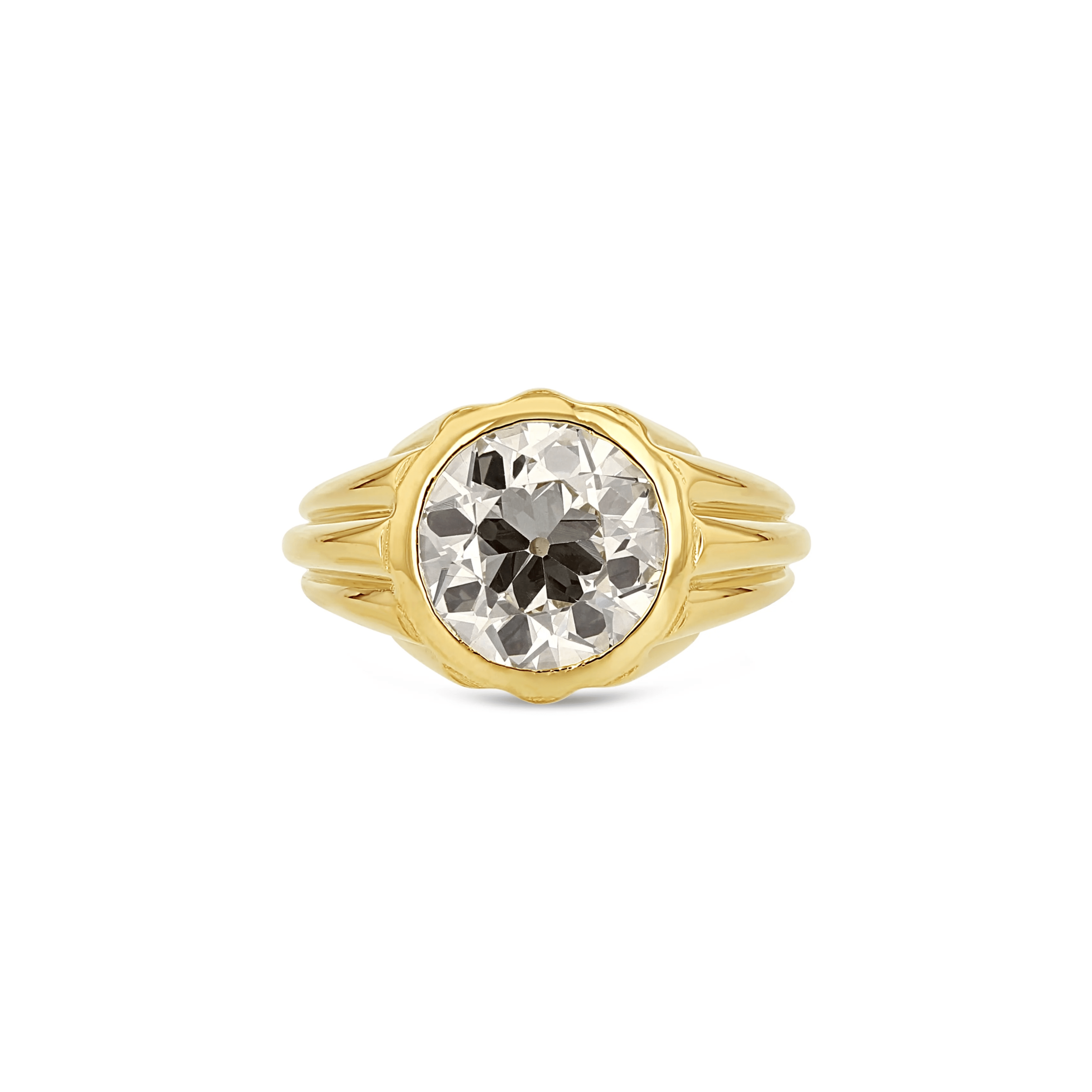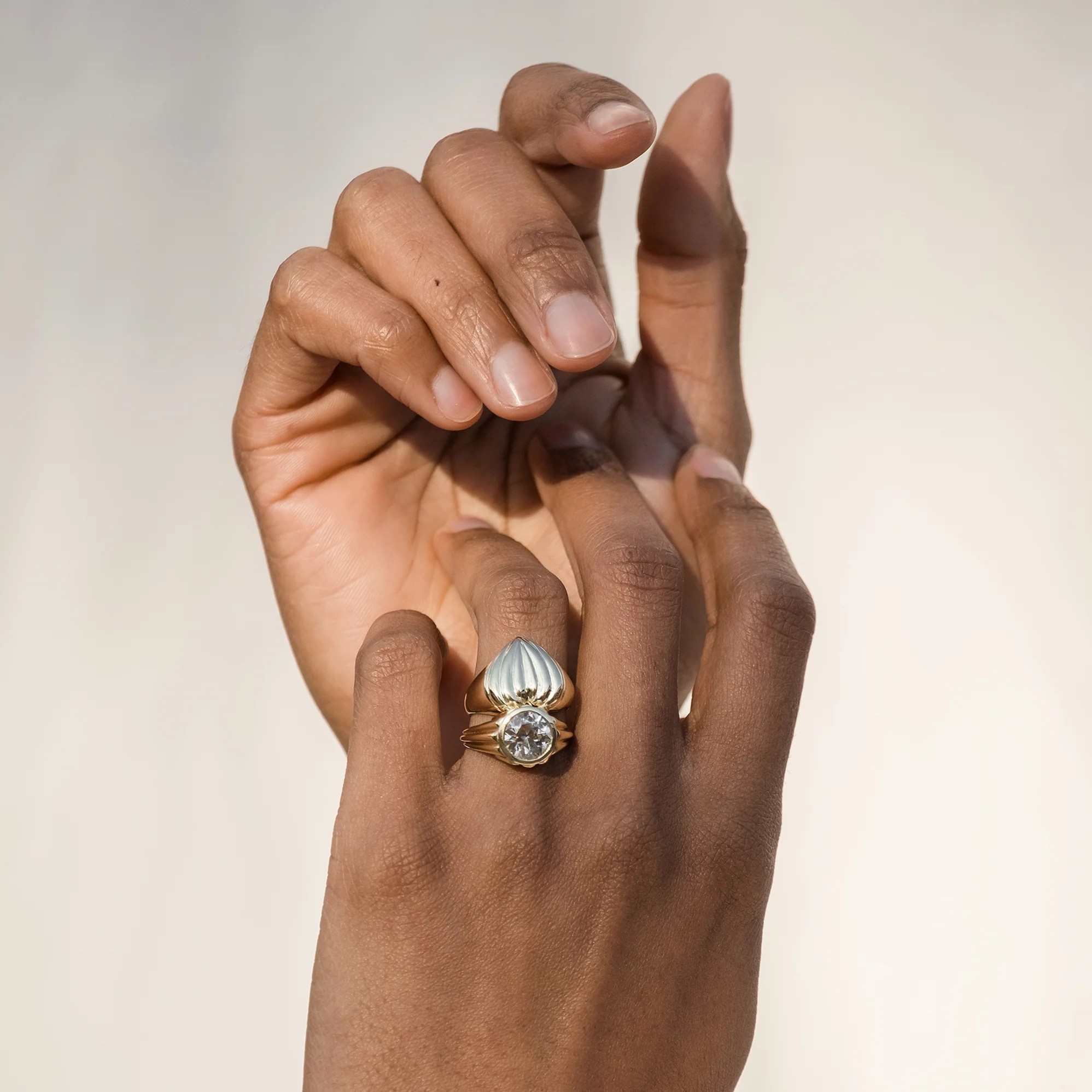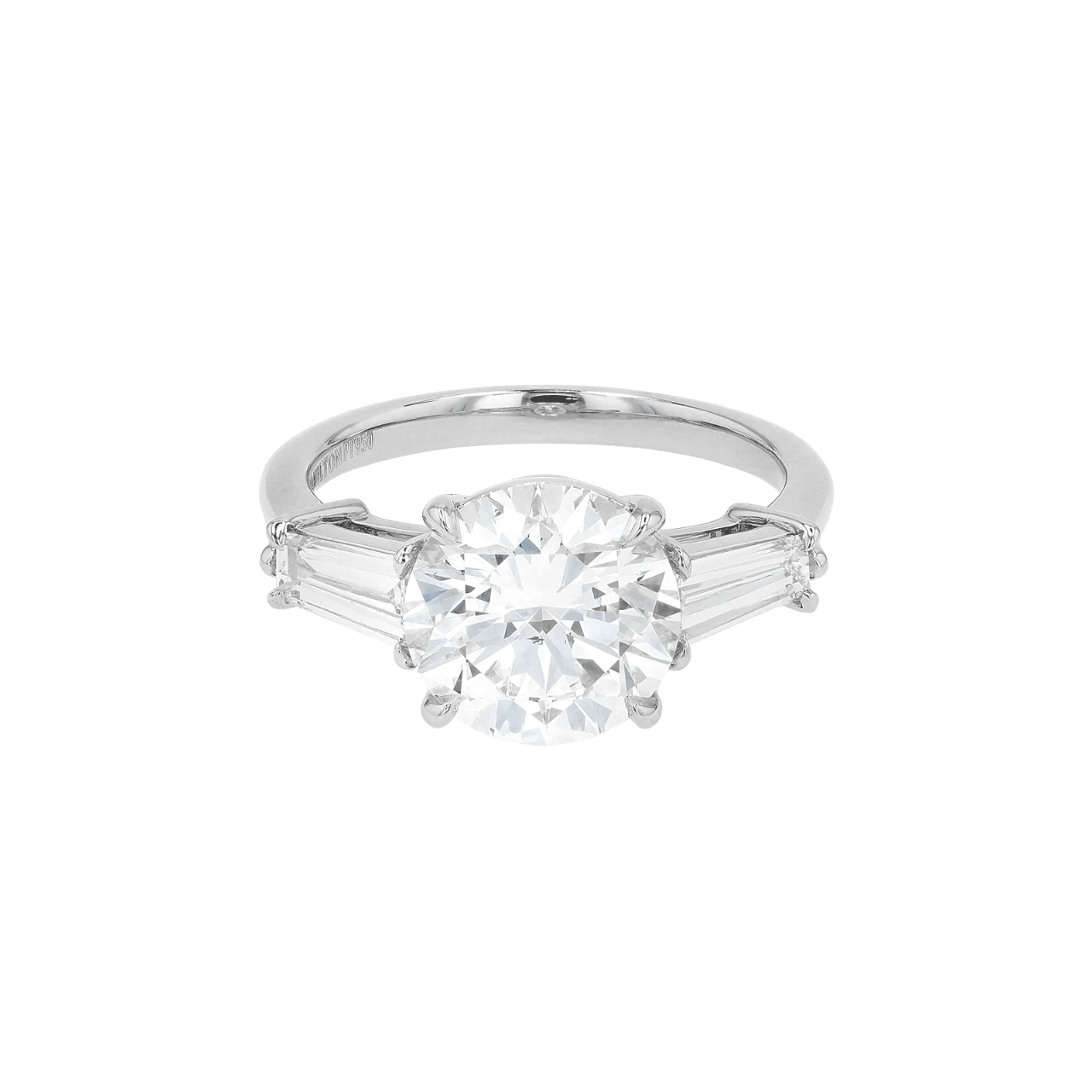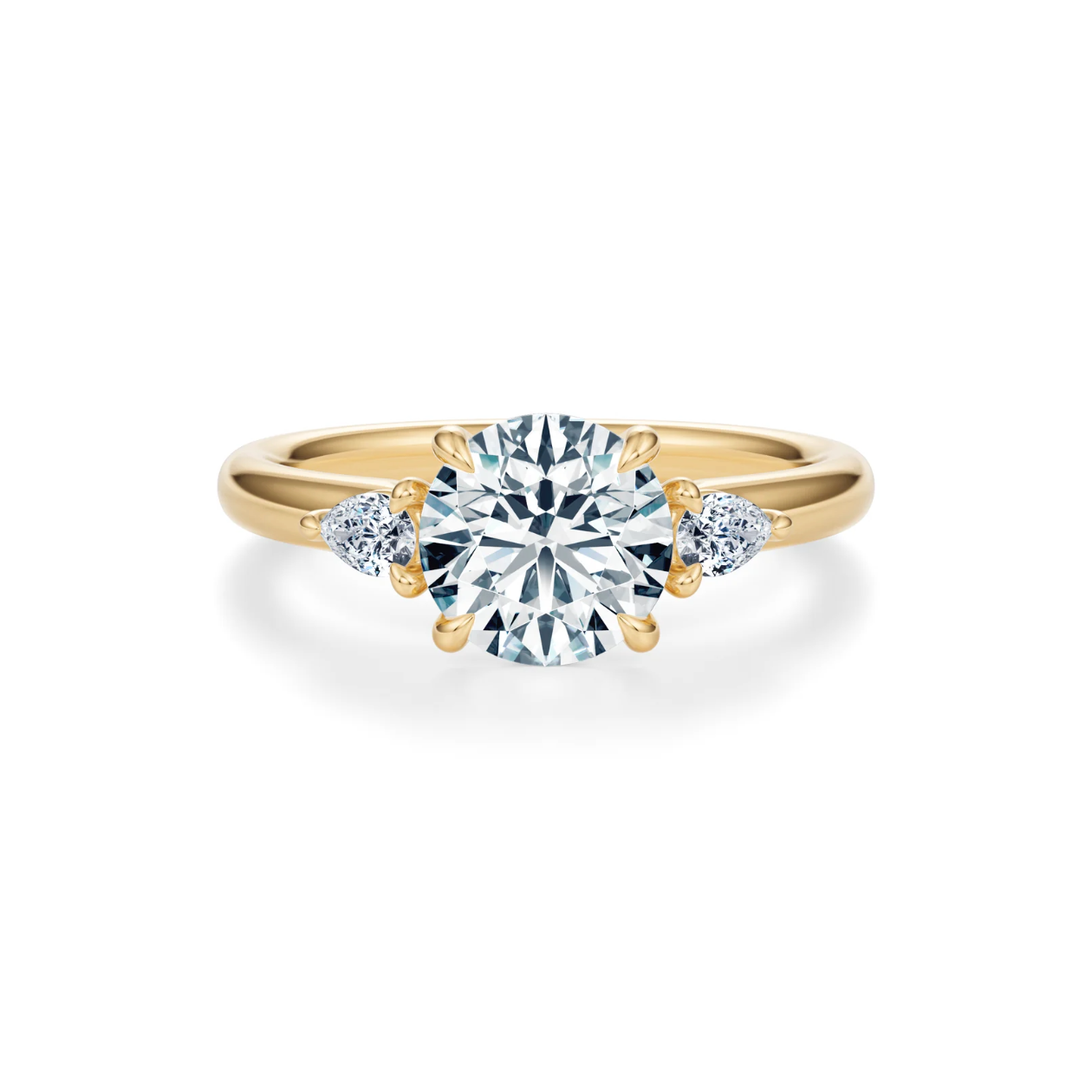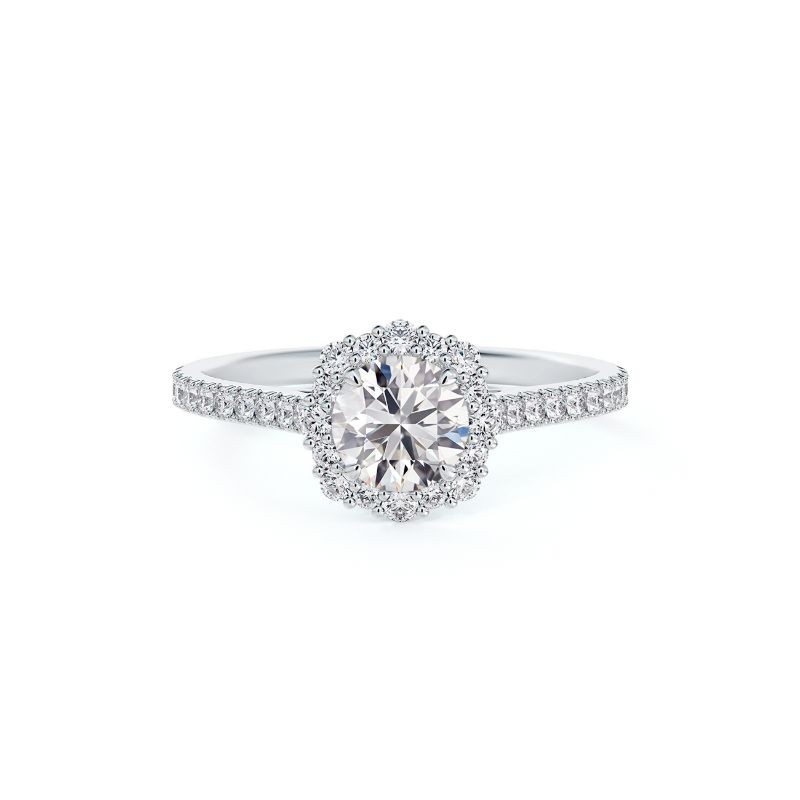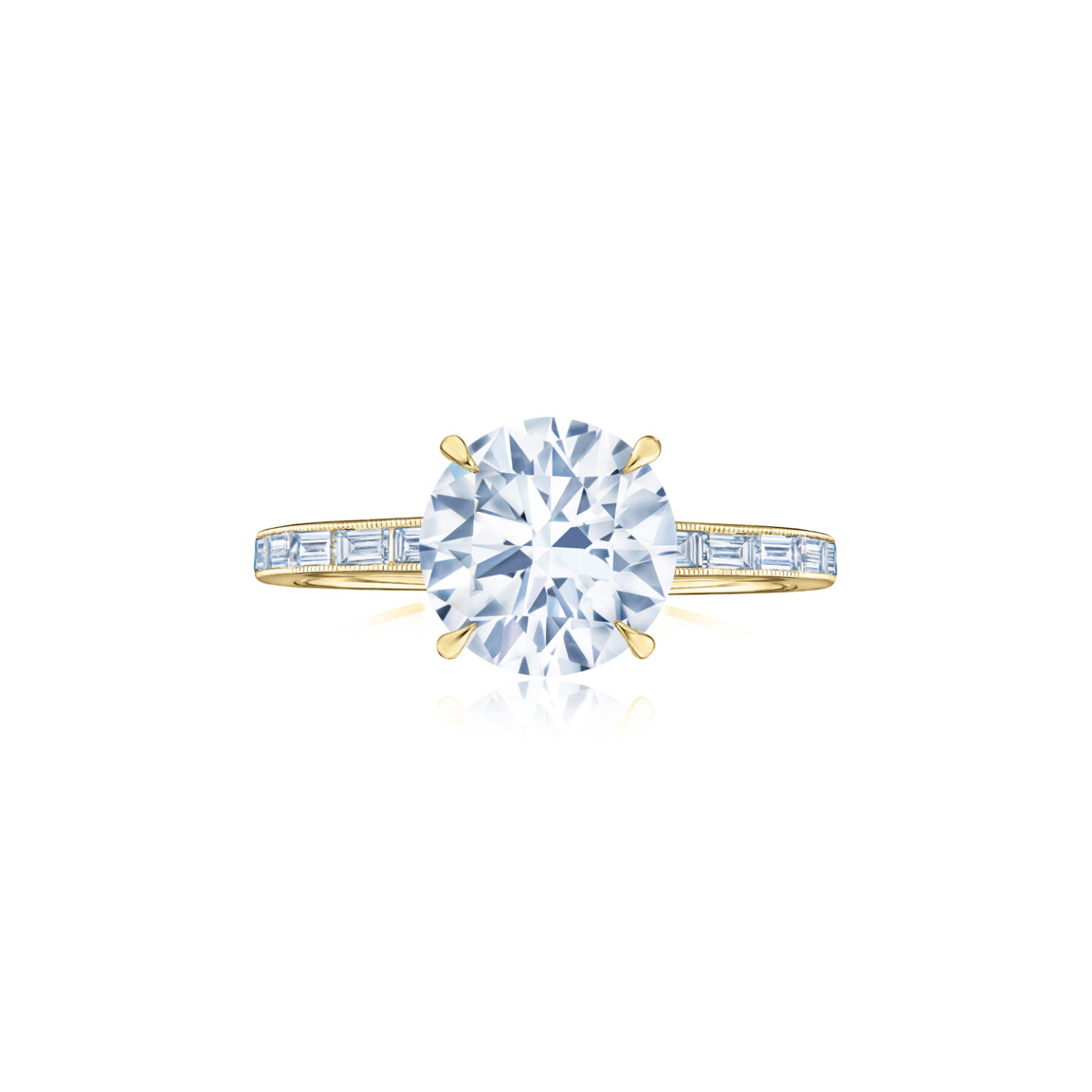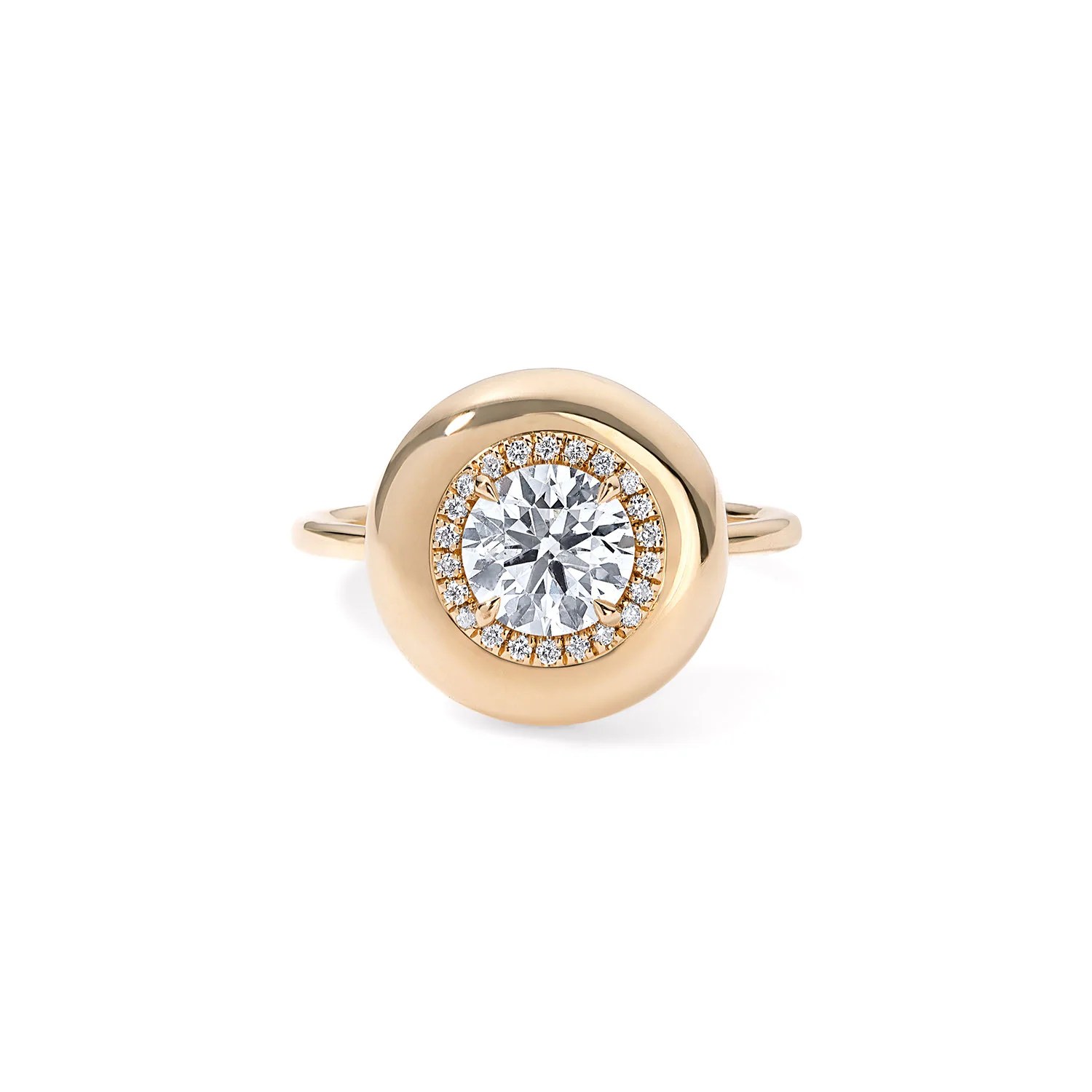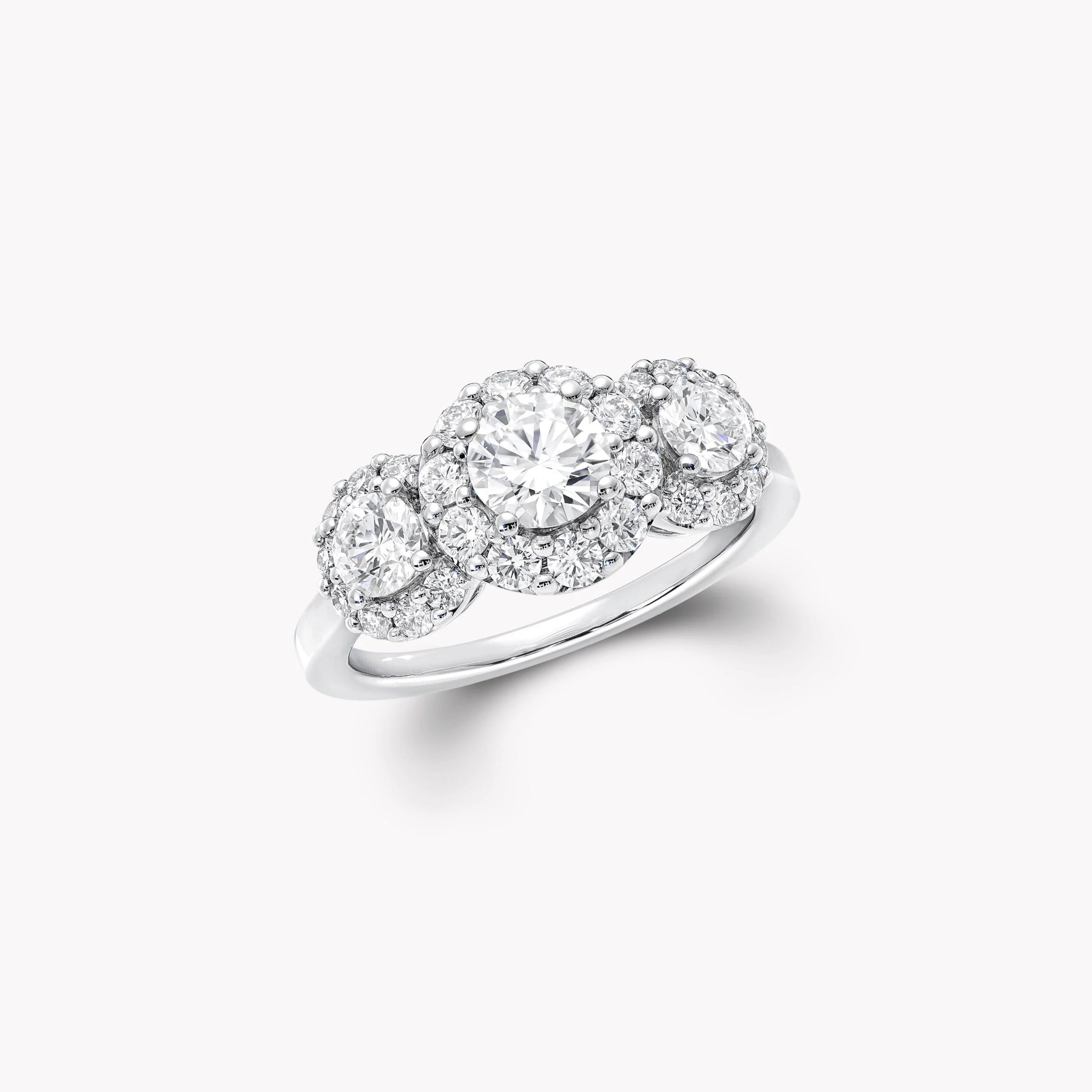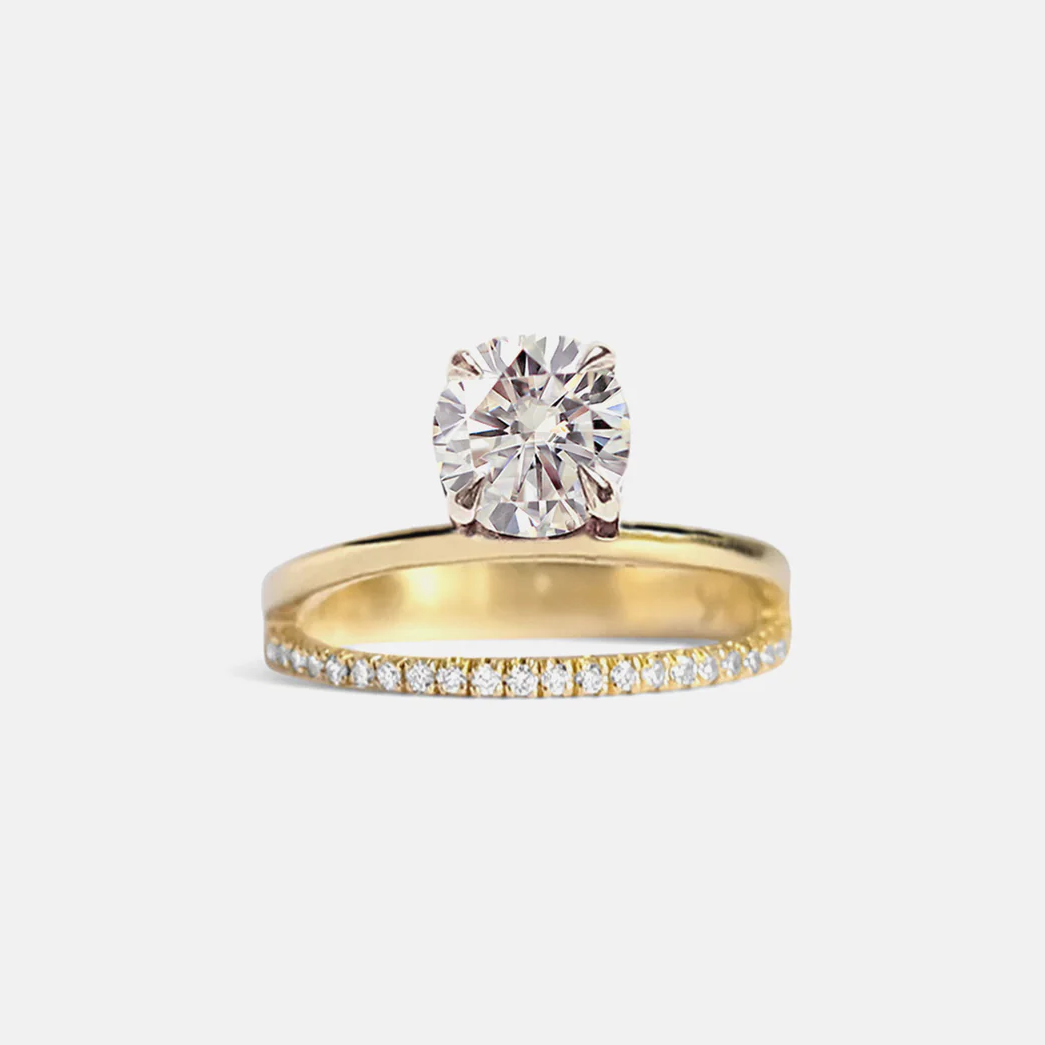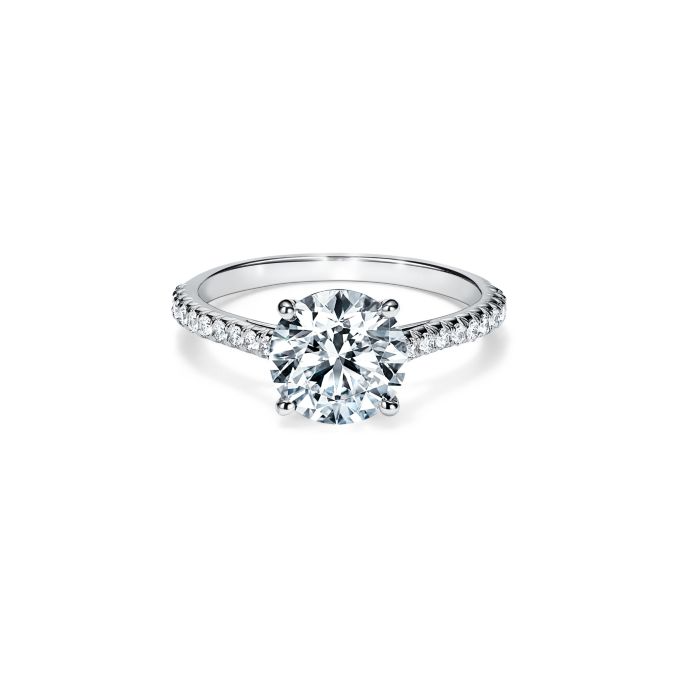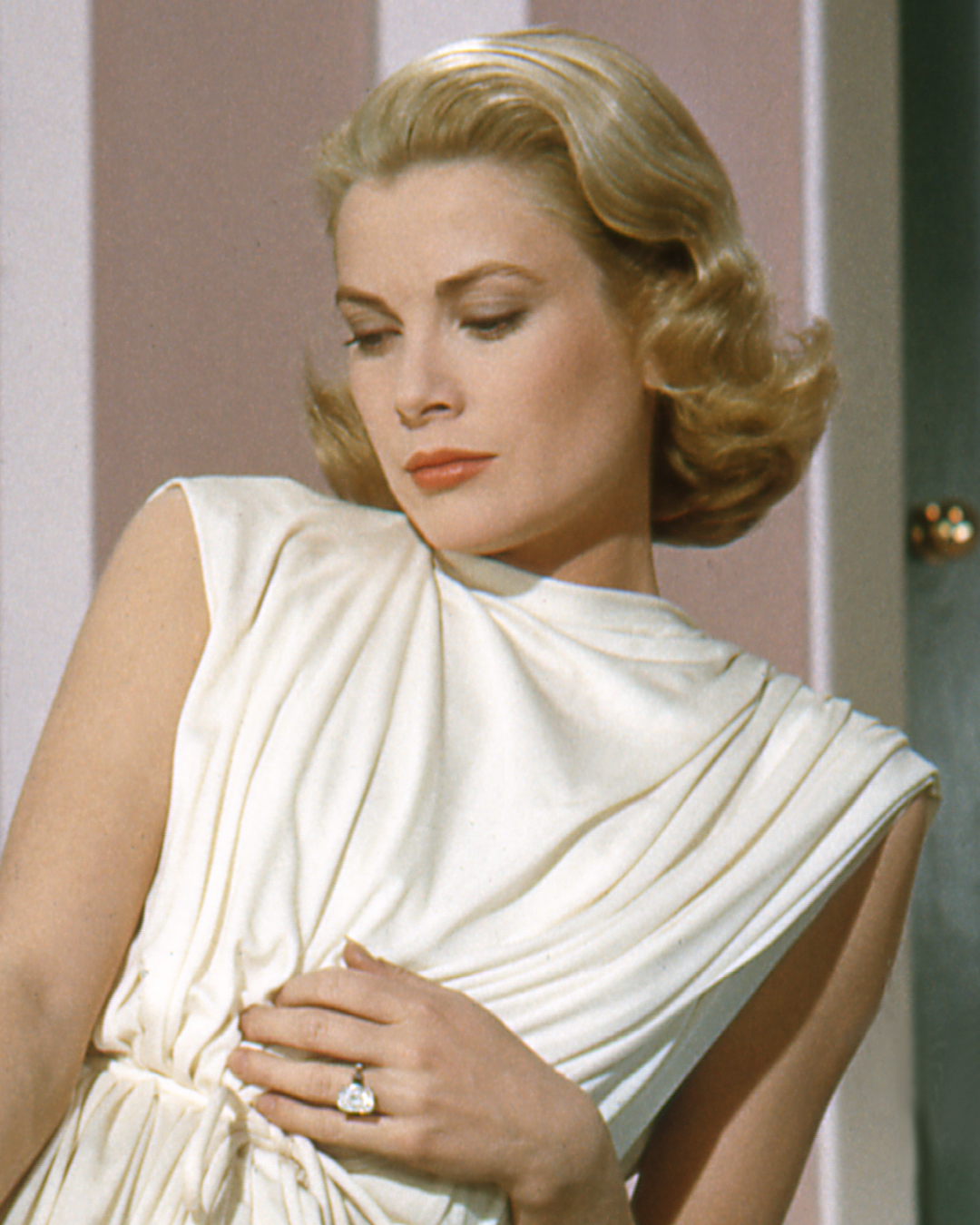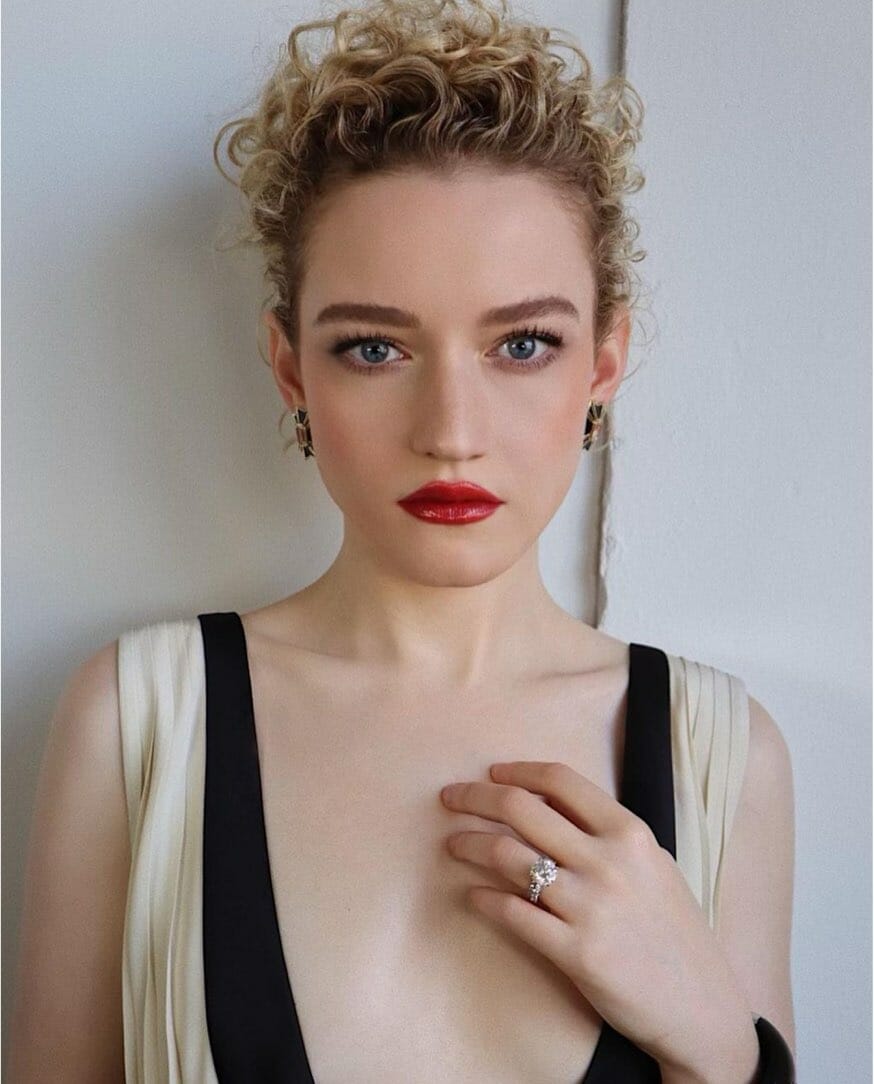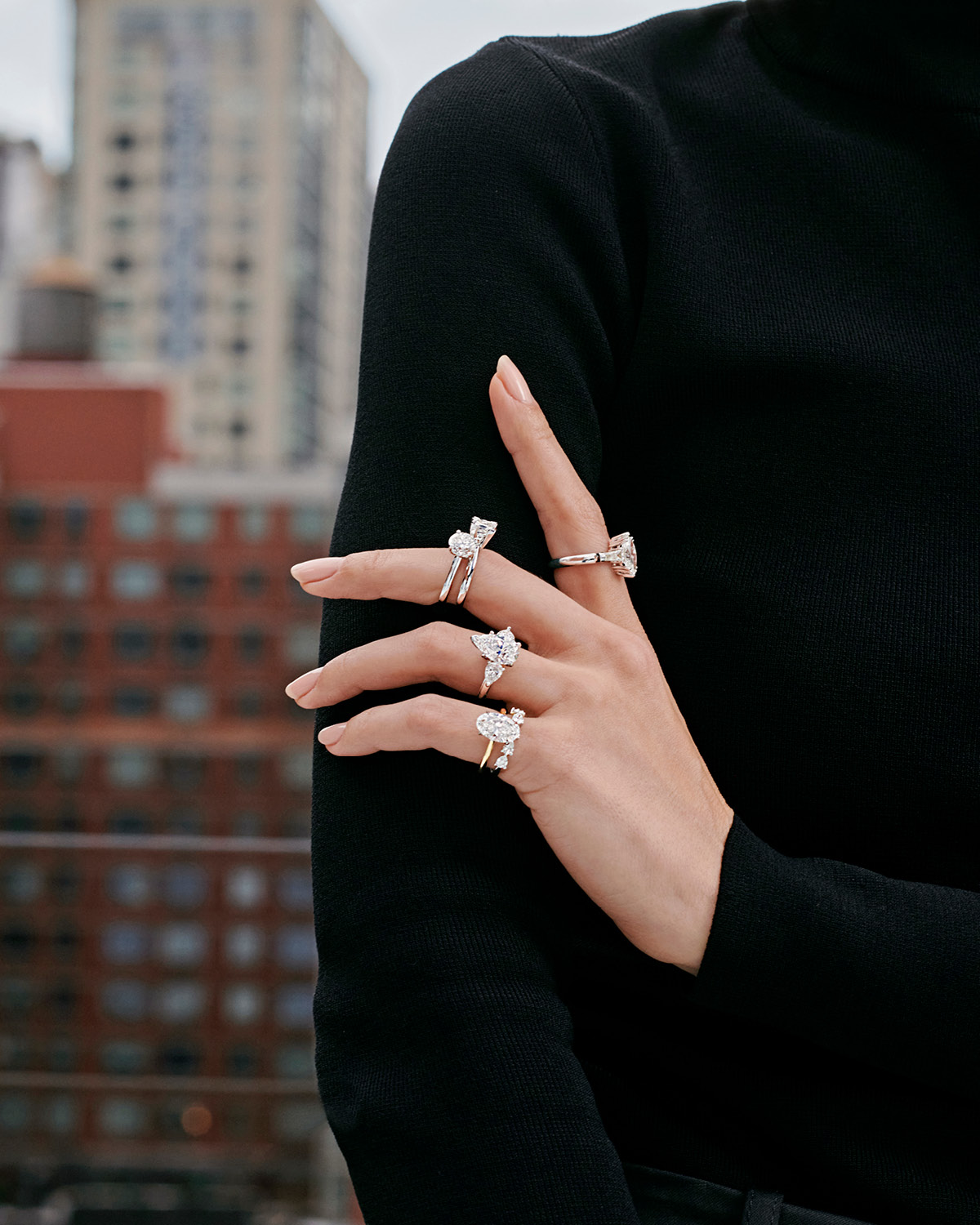Round engagement rings are the most popular choice for couples seeking a sparkling symbol of love and commitment, with round diamonds accounting for approximately 75% of all diamonds sold. Known for their perfect symmetry and incredible brilliance, round engagement rings are designed to shine in every light. With their 58 facets, round diamonds offer exceptional sparkle and are considered one of the most brilliant diamond shapes available. The round-cut diamond will always remain a classic, making it a stunning choice for a natural diamond engagement ring that will stand the test of time.
Ahead, learn everything you need to know about round engagement rings with diamonds—plus shop editor-approved styles for every taste and budget.
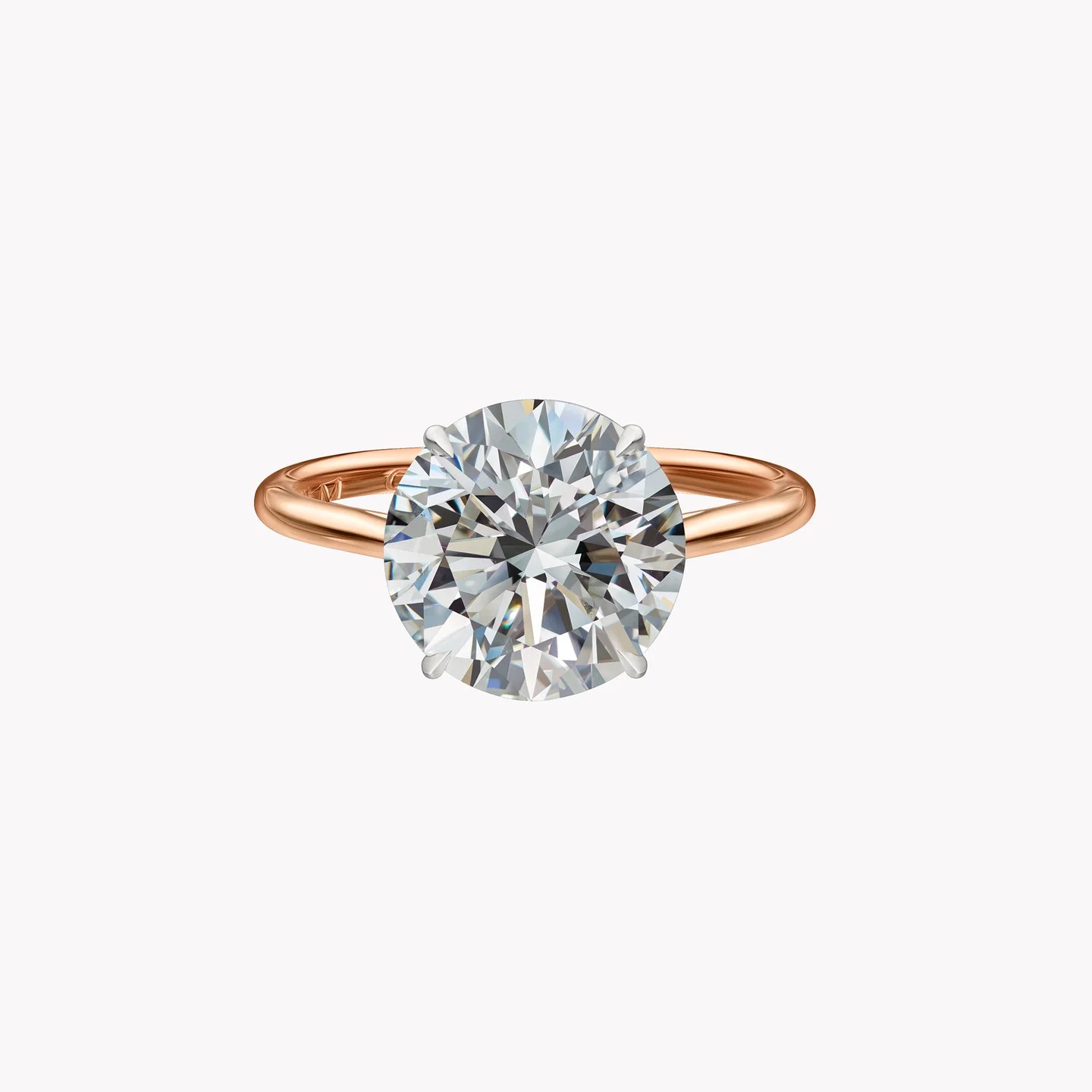
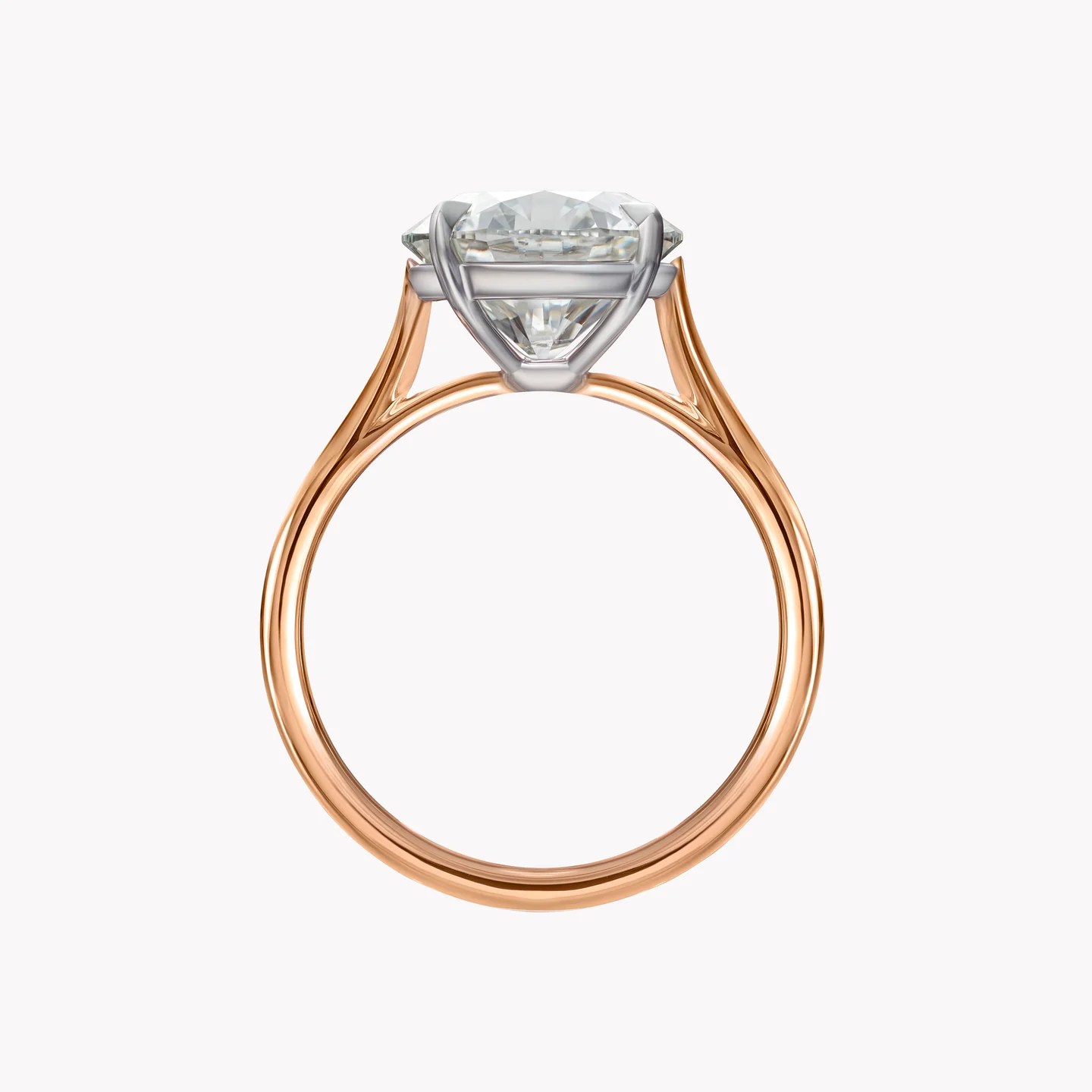
What is a Round Engagement Ring
A round engagement ring features a diamond that is cut into a perfectly circular shape, optimized to reflect light and maximize brilliance. This shape has been scientifically designed to ensure the most efficient light return, creating the breathtaking sparkle that round diamonds are known for. With 58 facets, these diamonds are carefully crafted to enhance their natural beauty and brilliance and are considered the most traditionally sparkly of all the diamond cuts.
The History of Round Engagement Rings
The round diamond has a rich history that dates back centuries, evolving into the most popular diamond shape in modern times. The first round diamonds were created in the 17th century when diamond-cutting techniques began evolving beyond basic table cuts. While diamond-cutting techniques have existed for hundreds of years, it was the introduction of the round brilliant cut in the early 20th century that revolutionized the diamond industry.
In 1919, Marcel Tolkowsky, a mathematician and gemologist, developed the round brilliant cut, which optimized the way light interacts with a diamond. His precise calculations established the ideal proportions and angles needed to maximize brilliance and fire.
The round brilliant cut, with its 58 facets, became the standard for diamond cutting and remains the most sought-after diamond shape today. Thanks to advancements in technology, modern round brilliant diamonds are cut with even greater precision than ever before, ensuring they exhibit unmatched sparkle and brilliance.
Why Round Engagement Rings Are the Most Popular Choice
Round brilliant cuts have been the most popular diamond shape since the early 20th century, so it’s no surprise that round engagement rings also remain the top choice for couples. What’s the appeal of round diamonds? Their sparkle, timelessness, and versatility are hard to beat.
Among traditional diamond cuts, the round brilliant cut remains the most optimized for brilliance. As the most popular diamond shape, it will stand the test of time. Whether set in a simple solitaire or an intricate halo design, the round shape complements various ring styles, making it ideal for both minimalists and maximalists.
Another advantage of round diamonds is their ability to mask color and inclusions better than other shapes, making them appear brighter and whiter even at lower grades of clarity and color.
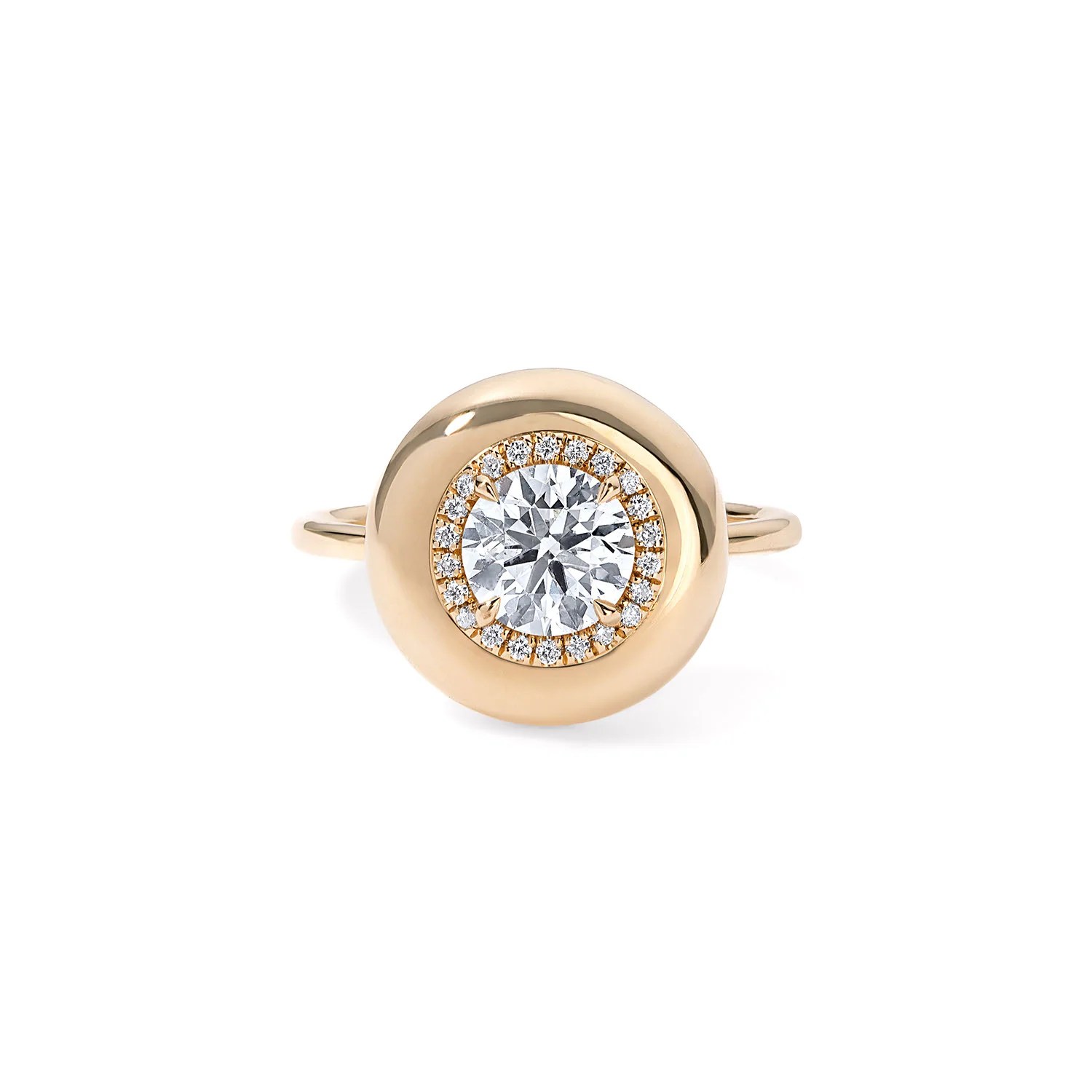

Shopping Tips for Round Engagement Rings
Shopping for the perfect round engagement ring can be an exciting yet overwhelming experience. Here are some essential tips to help you choose the best round diamond for your engagement ring:
Prioritize Cut Quality
The cut of a diamond determines its brilliance and sparkle, making it the most important factor to consider. The Gemological Institute of America (GIA) assigns a cut grade to round diamonds, ranging from Poor to Excellent. Opting for an Excellent or Very Good cut grade ensures your diamond will have the optimal proportions to reflect light beautifully.
Choose the Right Color Grade
Round diamonds naturally appear whiter due to their brilliant-cut facets. For a diamond that appears bright and colorless, consider choosing a stone within the G-H color range, as these diamonds offer excellent whiteness at a more affordable price point than the highest color grades (D-F).
Clarity Matters, But Don’t Overpay
Round diamonds effectively hide inclusions due to their intense sparkle. You can choose a diamond with a clarity grade of VS2 or SI1 and still have a beautiful, eye-clean stone without paying for a higher clarity grade.
Select a Setting That Enhances the Diamond
The setting of your round engagement ring plays a crucial role in its overall appearance. Traditional solitaire settings highlight the diamond’s brilliance, while halo settings add extra sparkle by surrounding the center stone with smaller diamonds. If you prefer a vintage look, consider a pave or intricate filigree setting.
Carat Weight: Bigger Isn’t Always Better
When shopping for round diamond engagement rings, carat weight plays a key role in both size and overall appearance. Since round diamonds carry their weight evenly, they often appear larger than other shapes of the same carat, but opting for a slightly lower carat weight—such as 0.90 instead of 1.00—can offer significant savings without a noticeable difference in size.
Buy from a Reputable Jeweler
Ensure that the diamond comes with a certification from a trusted gemological laboratory like GIA or AGS. A reputable jeweler will help guide you through the engagement ring shopping experience, provide detailed information about the diamond’s quality, and offer various settings to match your style.
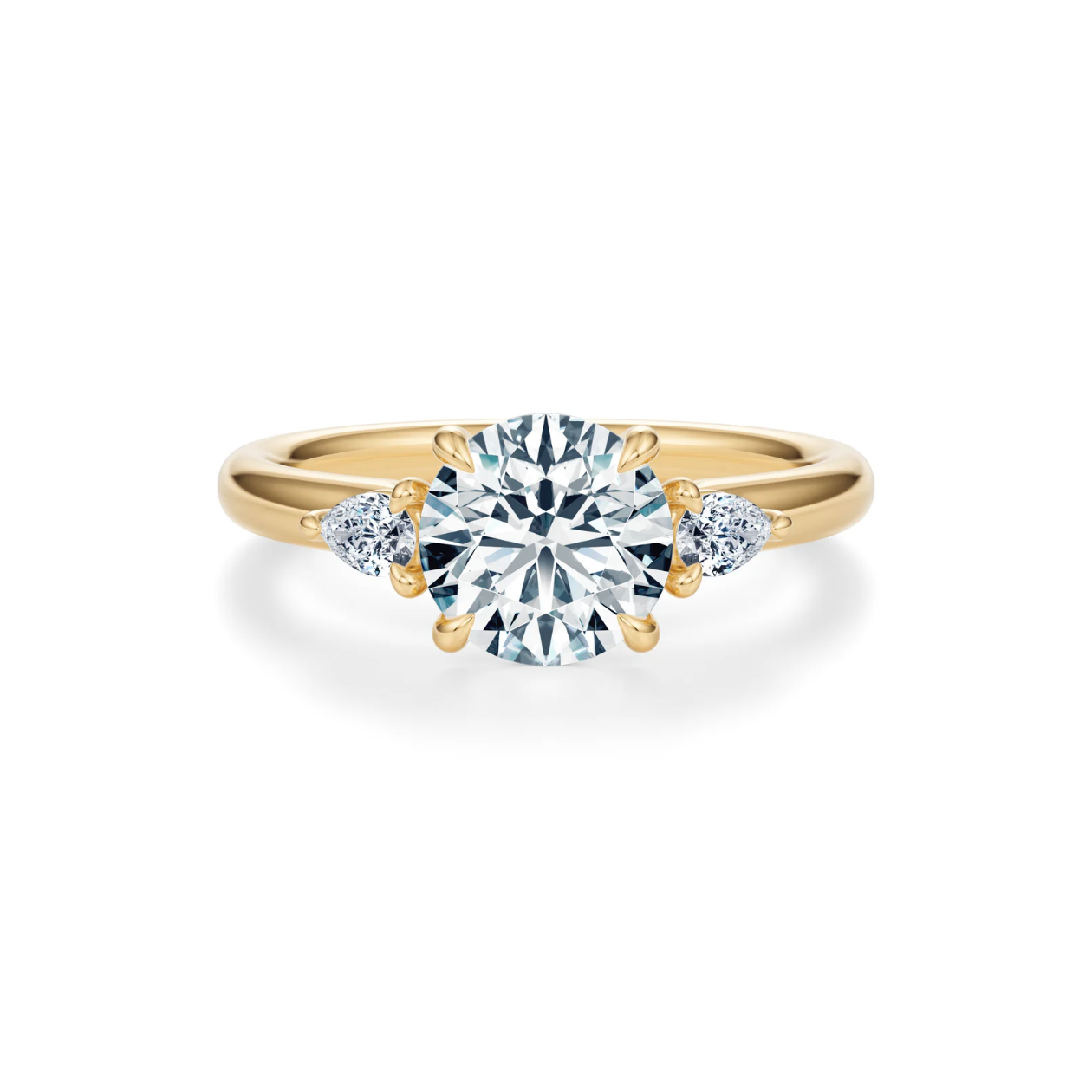
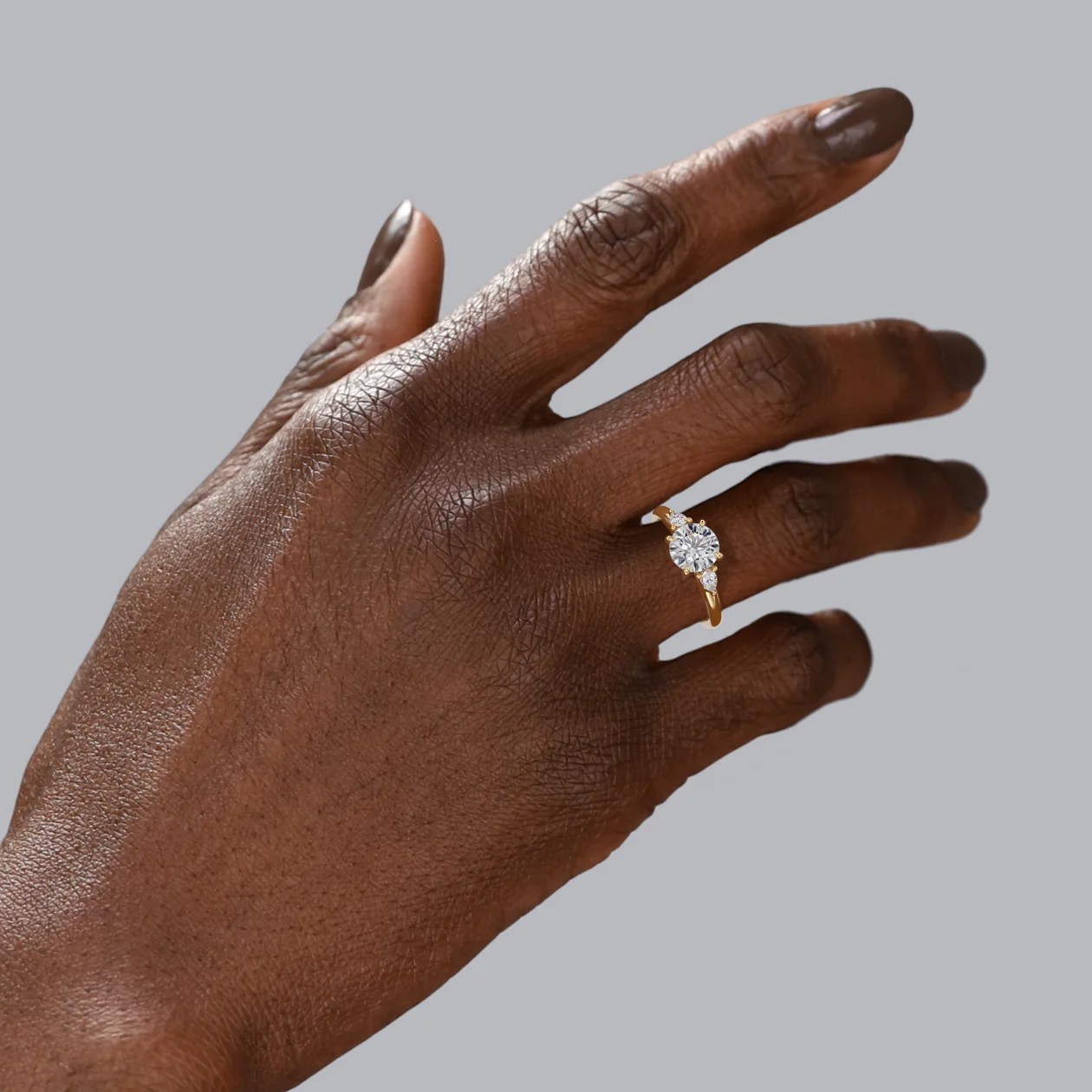
Best Settings for Round Diamond Engagement Rings
The round diamond is incredibly versatile and pairs beautifully with a variety of settings, whether you love a classic look or something more modern.
- Solitaire setting: A timeless choice that lets the brilliance of a round diamond take center stage, a diamond solitaire engagement ring setting offers a sleek and elegant look that never goes out of style. The prong setting, typically featuring four or six prongs, securely holds the diamond in place while allowing maximum light exposure for enhanced sparkle. Another plus? This simple style makes choosing a bridal set or wedding bands easy.
- Halo setting: For extra sparkle, a halo engagement ring setting surrounds the center stone with a circle of smaller diamonds, enhancing its size and brilliance. For a subtle yet dazzling touch, a hidden halo—a delicate ring of diamonds placed beneath the center stone—adds extra sparkle from every angle while maintaining a sleek, modern look.
- Pavé band: A pavé setting features a band encrusted with tiny diamonds, adding a luxurious touch while complementing the round diamond’s sparkle.
- Three-stone setting: Symbolizing the past, present, and future, a three-stone engagement ring setting pairs a round diamond with complementary side stones (often baguettes or smaller round diamonds) or gemstones for added brilliance.
- Vintage-inspired setting: Intricate details like milgrain, filigree, or engraving give round engagement rings a romantic, antique feel, perfect for those who love vintage glamour.
- Bezel setting: A bezel setting encircles the diamond with a thin metal rim, offering a sleek, modern look while providing extra security and durability—ideal for active lifestyles.
Can Round Diamonds Be Used In Vintage-Inspired Ring Designs?
Absolutely! You don’t have to choose a vintage diamond cut to pull off a vintage engagement ring. Round diamonds work well in vintage settings like filigree, milgrain, and halo designs, combining classic beauty with a timeless appeal—there are truly round engagement rings for every aesthetic.
Celebrities With Round Engagement Rings
Round engagement rings have long been a favorite among celebrities for their enduring style and exceptional sparkle. Stars like Miranda Kerr, Emily Blunt, Mila Kunis, and Jamie Chung all wear stunning round diamond engagement rings, proving that this shape never goes out of style.
Shop Round Engagement Rings
Get inspired by round engagement rings with natural diamonds from some of our favorite retailers and designers.
Round engagement rings are more than just a popular choice—they’re a timeless expression of love that blends unmatched brilliance with effortless elegance. Whether set in a sleek solitaire, surrounded by a halo, or paired with intricate vintage details, their versatility ensures that every bride can find a style that feels uniquely her own.
About Natural Diamond Council
Natural Diamond Council (NDC) is the global authority on natural diamonds. As a not-for-profit organization, NDC is committed to advancing the integrity of the natural diamond industry and celebrating the unmatched beauty and value of natural diamond jewelry. NDC serves as the industry’s definitive voice, offering expert insight, trusted education, and unparalleled access to the world of real, rare, and responsibly sourced natural diamonds.

